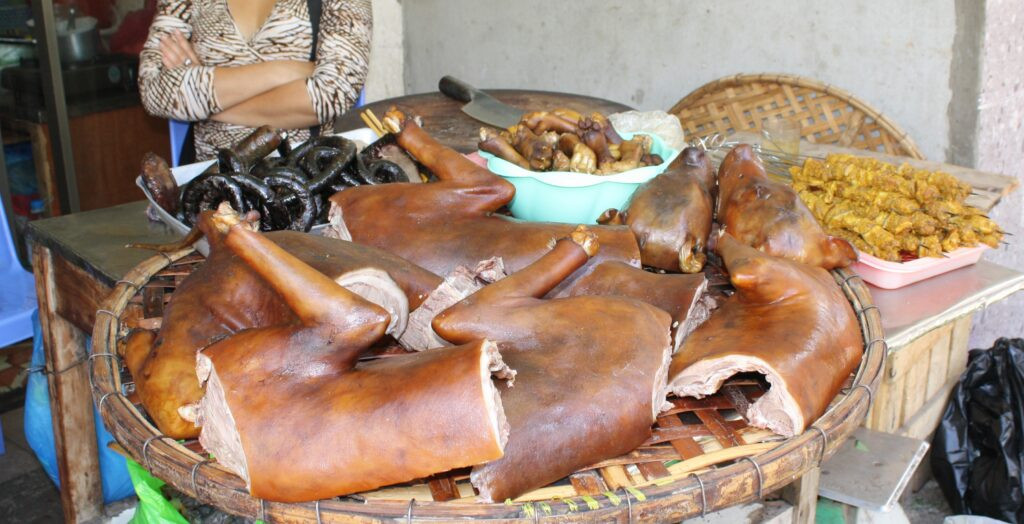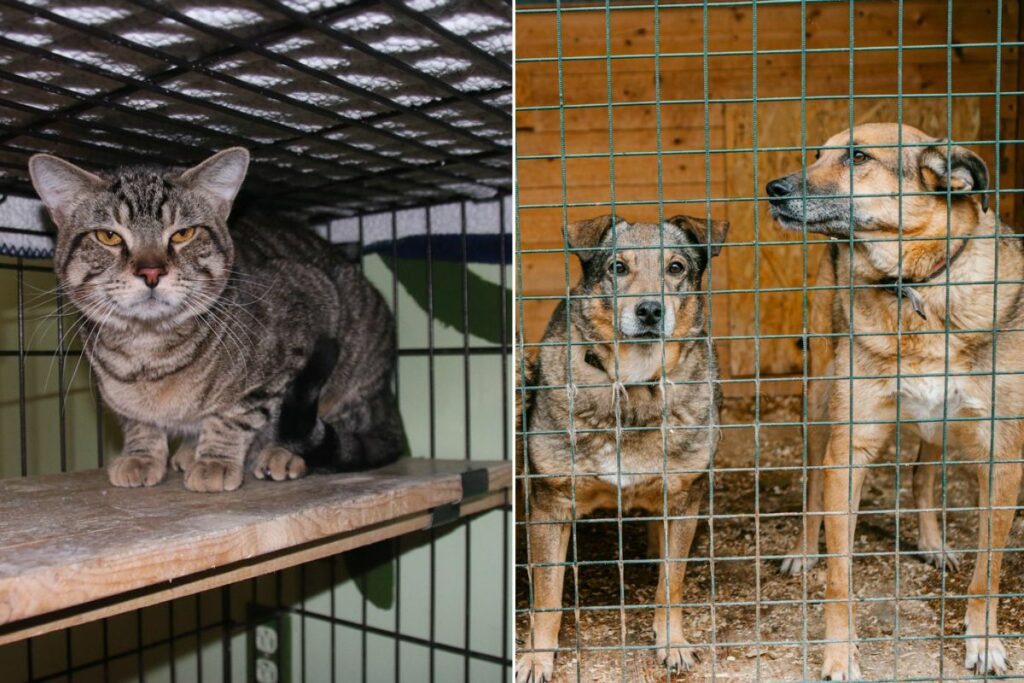It might come as a shock to many, but the consumption of cats is a practice in certain parts of the world. For some, this idea clashes with the common perception of cats as beloved pets, while others view it as a matter of cultural difference and dietary norms. This exploration aims to provide a balanced view, acknowledging both the cultural contexts and the ethical considerations surrounding the consumption of cats.
Just as the idea of eating dog meat is considered repulsive in many Western cultures, it’s crucial to recognize that dietary norms vary significantly across the globe. In some cultures where dog meat consumption is traditional, the Western aversion to it might seem equally perplexing. For instance, in India, the consumption of beef is considered taboo by Hindus and Buddhists, highlighting how deeply ingrained cultural and religious beliefs shape dietary habits. This comparison sets the stage for a nuanced understanding of why some countries consume cats, without condoning or condemning the practice.
While organizations like the World Animal Foundation advocate strongly against the consumption of dogs and cats due to animal welfare concerns, it’s important to approach this topic with cultural sensitivity. Understanding the reasons behind these practices is the first step in fostering informed discussions and promoting change through education and awareness, rather than judgment.
Background on Cat Consumption
World Animal Foundation stands as a leading voice for animal rights, advocating for responsible pet ownership and compassionate treatment of all animals. Our stance is clear: we do not promote the consumption of cats or dogs. However, in our mission to provide comprehensive animal knowledge, it’s essential to address complex issues like cat consumption with factual information and cultural context. Recognizing the diversity of global cultures and their practices is crucial, even as we maintain our own ethical viewpoints.
The reasons behind cat consumption in certain cultures are varied and complex, often mirroring the reasons for dog meat consumption:
- Sustenance and Nutrition: In some regions, cat meat has historically been a source of protein and sustenance, particularly in times of scarcity.
- Perceived Health Benefits: Similar to dog meat, cat meat is sometimes believed to possess medicinal properties or offer specific health benefits in traditional medicine systems.
- Affordability: In some economies, cat meat may be a more affordable protein source compared to other meats.
- Tradition and Culture: Centuries-old traditions and cultural norms play a significant role in food choices, and cat consumption may be deeply embedded in the culinary heritage of certain communities.
While cat meat consumption has been a long-standing practice in some cultures, it’s important to note that views are evolving. Just as dog meat consumption is declining in Asia, particularly among younger generations, attitudes towards cat meat are also shifting in some regions.
Countries Where Cat Consumption Occurs
While less globally prevalent than dog meat consumption, cat meat consumption exists in various parts of the world. It’s crucial to approach this topic with sensitivity and rely on available data and reports from reputable organizations.
Asia: A Region with Historical Consumption
While specific data on cat consumption is less readily available compared to dog meat, it is known to occur in some Asian countries.
-
China: While China is more widely known for dog meat consumption, cat meat is also consumed, particularly in certain regions. Historically, cat meat dishes have been part of Cantonese cuisine. Although less prevalent than dog meat, the practice exists.
 do chinese eat dog
do chinese eat dog -
Vietnam: Similar to China, Vietnam is known for dog meat consumption, and cat meat is also part of the culinary landscape, though less documented. “Little tiger” is a euphemism used for cat meat in Vietnam.
It’s important to note that even in countries where cat consumption exists, it is often localized and not representative of the entire national population’s dietary habits. Furthermore, as highlighted in the original article regarding dog meat in South Korea, there’s a growing trend towards reduced consumption and increased support for bans, suggesting evolving attitudes towards companion animal consumption in Asia.
Europe: Isolated Cases
While cat consumption is largely taboo in Europe, there have been documented instances, historically and even in recent times, of cat meat consumption in certain regions.
- Switzerland: A 2014 report indicated that a small percentage (around 3%) of rural Switzerland consumed cat meat, primarily as jerky or sausages, particularly as a Christmas tradition in some areas. This practice, while not widespread, highlights that cat consumption is not entirely absent in Europe, albeit highly localized and culturally specific.
Other Regions
Reports and anecdotal evidence suggest that cat consumption may occur in other parts of the world, although concrete data is often scarce. This lack of data underscores the need for further research and open discussions to understand the full scope of this issue.
Legal and Ethical Considerations
The legality and ethical perception of cat consumption vary significantly across the globe.
-
Legal Bans: Several countries and regions have taken steps to ban the consumption of cats, often alongside bans on dog meat. Taiwan became the first country to explicitly ban cat and dog meat consumption in 2017. In 2018, the United States passed the Dog and Cat Meat Trade Prohibition Act, and South Korea followed suit with a ban in 2024, set to be enforced in 2027. These legal developments reflect a growing global trend towards recognizing cats and dogs as companion animals, not food sources.
 do people eat cats in china
do people eat cats in china -
Ethical Concerns: For many, especially in Western cultures, the idea of eating cats is ethically objectionable due to the close bond humans often share with cats as pets. Animal welfare organizations like World Animal Foundation strongly condemn the practice, citing concerns about cruelty in the sourcing and slaughter of cats for meat. The lack of humane treatment and often brutal methods used in the cat meat trade raise serious ethical questions.
Do Chinese People Eat Cats?
Yes, cat meat consumption exists in China, although it’s not as widespread as dog meat and varies regionally.
-
Regional Practice: Cat meat dishes, particularly “dragon, tiger, phoenix” (snake, cat, chicken), are associated with Cantonese cuisine in southern China. However, it’s not a staple food across the entire country.
 do chinese people eat cats and dogs
do chinese people eat cats and dogs -
Declining Popularity: Similar to dog meat, cat meat consumption is reportedly declining in China, especially among younger generations and in urban areas, influenced by growing pet ownership and animal welfare awareness.
What Can Be Done?
Addressing the issue of cat consumption, like dog meat consumption, requires a multi-faceted approach:
- Education and Awareness: Raising global awareness about the practice and the associated animal welfare concerns is crucial. Educating people about the sentience of cats and the cruelty often involved in the trade can shift perceptions and foster empathy.
- Advocacy and Legislation: Supporting animal welfare organizations working to end the cat and dog meat trade and advocating for stronger animal protection laws in countries where consumption occurs are vital steps.
- Cultural Sensitivity and Dialogue: Engaging in respectful dialogue with cultures where cat consumption is practiced, acknowledging cultural norms while promoting ethical considerations, can be more effective than outright condemnation.
- Supporting Local Animal Welfare Efforts: Assisting local animal welfare groups in regions where cat consumption occurs can provide direct aid to animals and support grassroots efforts to change practices from within.
FAQs
Is It Illegal to Eat Cats?
It is becoming increasingly illegal in more places. Taiwan, the US, South Korea, and the UK have implemented bans or restrictions on cat meat consumption and/or trade. However, in many countries, it remains legal, highlighting the need for continued legal reforms.
What Cultures Eat Cats?
While specific cultural groups are less clearly defined for cat consumption compared to dog meat, cat consumption has been reported in parts of:
- China (Cantonese cuisine)
- Vietnam
- Switzerland (historically and in isolated areas)
- Potentially other regions in Asia and beyond, although data is less readily available.
Why Do Some Cultures Consume Cat Meat?
Reasons are complex and varied, often rooted in:
- Historical sustenance needs.
- Traditional medicine beliefs.
- Economic factors.
- Cultural norms and culinary traditions.
However, evolving societal values, increased awareness of animal sentience, and growing pet ownership are leading to shifts in attitudes and practices in many regions.
Final Thoughts
The consumption of cats is a sensitive issue that necessitates a balanced understanding. While acknowledging cultural differences and historical contexts, it’s crucial to address the ethical concerns surrounding animal welfare and cruelty associated with the cat meat trade. Open discussions, education, and advocacy are essential to promoting compassionate treatment of all animals and working towards a world where companion animals are not viewed as food sources.
Organizations like World Animal Foundation remain dedicated to educating the public about animal welfare issues, including the complexities of cat and dog meat consumption, and advocating for a more humane world for all creatures.


